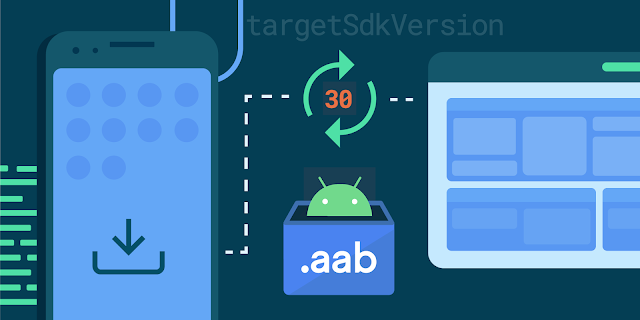In the world of mobile app development, Android remains a dominant player with a massive user base. To deliver their apps efficiently, developers need to package and distribute them in a suitable format. This is where the Android App Bundle (AAB) comes into play. In this blog, we'll explore what an AAB file is, how it works, and the benefits it brings to developers and users alike.
What is an AAB File?
An Android App Bundle (AAB) is a publishing format introduced by Google in 2018 as an improved way to package and distribute Android apps. Unlike the traditional APK (Android Package) format, which contained all resources and code for all device configurations, AAB files are more flexible and efficient.
With AAB files, developers can create a single, universal package that contains everything needed to generate optimized APKs for various device configurations. This allows for smaller app sizes, faster downloads, and better app performance, as users receive only the resources necessary for their specific devices.
How Does the AAB File Work?
The AAB file works through a process called "Dynamic Delivery." When developers upload an AAB file to the Google Play Store, it undergoes several steps to optimize app delivery to end-users:
- Splitting Resources: The AAB file contains the app's compiled code and resources. During the upload process, Google Play's server splits the AAB into smaller APKs, each containing resources tailored to specific device configurations (screen density, CPU architecture, language, etc.).
- App Bundles on the Play Store: When a user tries to download the app, the Play Store delivers only the APKs that match the user's device configuration. This process significantly reduces the download size compared to the traditional APK approach.
- Dynamic Features: With AABs, developers can also include dynamic features in their apps. These features are modules that users can download on-demand, reducing the initial install size even further. For example, a photo editing app could have separate dynamic features for filters or stickers.
Benefits of Using AAB Files:
- Smaller App Sizes: AABs allow developers to reduce app sizes significantly by delivering only the necessary resources to each user. This leads to faster downloads and a better user experience.
- Faster Updates: Since users only download the updated APKs relevant to their devices, app updates are smaller and faster. This encourages users to keep their apps up-to-date, benefiting developers by ensuring a wider user base on the latest version.
- Improved User Experience: Smaller app sizes and faster downloads mean users can access and start using apps quicker. Additionally, the reduced storage footprint makes it easier for users to install more apps without worrying about running out of space.
- Dynamic Features: AABs support dynamic feature modules, allowing developers to offer optional features that users can download on-demand. This gives developers the flexibility to add new functionalities without bloating the core app.
- App Bundle Explorer: Developers can utilize the Play Console's App Bundle Explorer to inspect the contents of an uploaded AAB file. This tool allows them to verify the presence of various resources, explore split APKs, and ensure proper app optimization.
Conclusion:
The Android App Bundle (AAB) is a revolutionary packaging format that empowers Android developers to create smaller, more optimized apps. By using dynamic delivery and splitting APKs tailored to specific device configurations, developers can enhance user experience and streamline the app update process. The AAB format represents a significant step forward in the Android ecosystem, benefitting both developers and users with improved app performance and efficiency.
As Android continues to evolve, the AAB format will likely become the standard for app distribution, making it essential for developers to adopt this approach to stay ahead in the ever-competitive world of mobile app development.
Certainly! If you're interested in exploring more details about Android App Bundles (AAB) and how they work, you can refer to the official Android Developer documentation on this topic: Android App Bundle Documentation
The official documentation provides comprehensive information about AAB files, their benefits, how to create and manage them, and various tools and resources available to developers for leveraging the power of dynamic delivery and app optimization. Happy exploring!



No comments:
Post a Comment